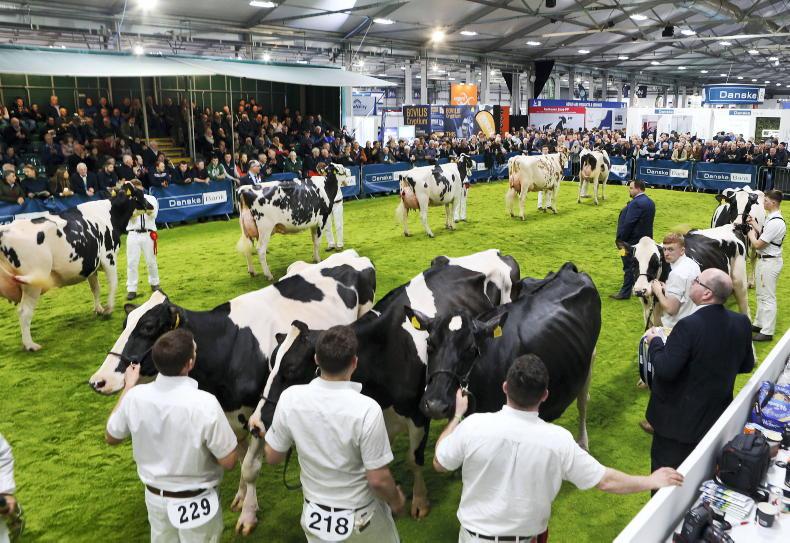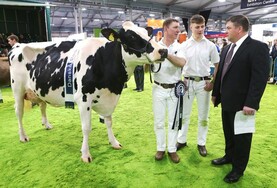The latest results from a long running survey of dairy farmers at the RUAS Winter Fair suggest NI milk production is likely to be reasonably robust during 2025, with the potential for continued growth when compared to output in 2024.
As shown in Figure 1, nearly three-quarters of the farmers surveyed said they intend keeping production levels unchanged in the year ahead. That figure is actually the highest we have ever recorded in over 15 years of completing this survey, which probably reflects a number of pressures on the industry, including the costs of expansion and the difficulties in accessing labour on farms.
At either end are farmers who intend cutting back or retiring and those who are keen to expand their operations.
In our 2024 survey, just one farmer said they would be reducing milk production next year.
While it is a limited sample size, that figure is down on what we normally see, which suggests there is confidence among farmers about the year ahead.
That leaves just over one quarter of farmers indicating they will expand output in 2025, which is similar to the figures we have recorded in the previous two years.
Current NI milk production is strong and to the end of September 2024 is running 2% ahead of the same period in 2023 – our survey suggests we can expect a similar increase to occur in 2025, assuming there are no major global shocks to impact the industry.
Milk price
We also asked farmers what milk price they expect to receive in 2025.
As shown in Figure 2, well over half of those surveyed expect it to be in the range of 40p to 45p/l, with a further 29% anticipating prices of 46 to 50p/l.
The results from previous surveys show that NI dairy farmers tend to under-estimate milk prices in the following year.
At last years’ event, nearly half expected prices in 2024 to average below 35p/l.
However, 2024 has delivered a fairly sustained period of price increases, having started out in January at an average of 36p/l and expected to be in the region of 45p/l by the end of the year. As a result, it looks like the NI average price recorded by DAERA will be over 40p/l.
While farmers will hope that prices will continue to edge upwards in 2025, in general, processor representatives at the Winter Fair were cautious about the year ahead.
Messy picture for dairy farmers around IHT
The second part of our survey focused on the proposed reforms to Inheritance Tax (IHT) effective from April 2026, when both agricultural property relief (APR) and business property relief (BPR) will be limited to a threshold of £1m per individual.
Our first question asked farmers whether they owned assets of over £2m, which is the maximum possible APR and BPR available to a husband-and-wife farming partnership.
Recent analysis produced by DAERA, which utilised data from the annual Irish Farmers Journal land price survey and added in estimates of typical livestock and machinery values on farms, put an average value of £21,000 per acre on owned land.
In other words, it would take just over 48 acres of owned land to breach the £1m threshold for APR and BPR, while a farm of 96 acres would be over a £2m limit.
The DAERA analysis suggested that 87% of dairy farms are over £1m in value, with 58% having assets of at least £2m.
Our survey suggests these figures could be an under-estimate, with 77% of respondents indicating they own assets of at least £2m.
Perhaps that is not a surprise. The DAERA analysis relies on NI averages, but dairy farms tend to be situated in lowland areas or operate on improved land, so land value tends to be higher. They also carry more machinery and operate at higher stocking rates than a typical beef and sheep farm.
Partnership
Our survey also shows that most dairy farmers operate in a partnership with a family member (70%), with 23% in business as a sole trader and just 7% operating their dairy enterprise in a limited company.
Land deeds
When it comes to working out just who owns the land, it is generally assumed that most deeds are in the name of the person who inherited the farm.
However, in our survey, just 34% of respondents indicated that all owned land was in the name of a single individual. The majority (55%) said land deeds were in the name of two people, although we do not know if this applies to all land on the farm or just a proportion – given the dominance of farming partnerships, it makes sense that any recent land purchased would be in more than one name.
Advice
Nearly half (49%) of farmers said they have already discussed the potential changes to IHT with a professional person (solicitor or accountant).
In addition, where land is to be passed on as part of IHT planning, 62% said they would encourage a son or daughter to get a prenuptial agreement in place before getting married.
Actions
Our final question asked farmers what action they will consider taking if the proposed IHT changes remain in place.
The most popular response was to pass on land during their lifetime to the next generation (54%), followed by putting land into the name of their spouse to double APR (21%). Less popular options were a life insurance policy to cover IHT liabilities (15%) or putting land into a trust (6%).






 This is a subscriber-only article
This is a subscriber-only article










SHARING OPTIONS: